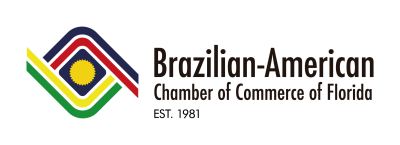April 04, 2017

Imports from Brazil advance to record high as exports retreat under weight of Brazil’s recession
The combination of economic expansion in the US and deep recession in Brazil lifted imports of Brazilian-made goods into Florida while slashing demand for merchandise bound to the country from Florida ports for the third consecutive year.


Florida’s imports of merchandise from Brazil advanced 12.2 percent during 2016 to a record high of $6.2 billion. Brazil was Florida’s third largest trading partner during the year, behind China and Japan. The increase in imports last year follows a larger 21.2 percent rise during 2015. Last year’s increase was led by a jump in imports of so-called special classification commodities, an ambiguous category of merchandise which is largely comprised of semi-finished goods that require further manufacturing or processing to become a finished good. These component goods are known in the realm of foreign trade as intermediate trade and are part of the global value chain, an increasingly large component of all world trade.

Florida’s imports from Brazil were also driven by a $100 million leap in US purchases of Brazilian-made industrial machinery and equipment in 2016 to a level of $182.3 million. Within this category of mainly capital goods, imports of machine tools, agricultural equipment, materials handling equipment, and computers and accessories led the increase, which more than offset a steep decline in imports of drilling and oilfield equipment.
Imports of Brazilian aircraft and parts, one of the largest categories of purchases coming into Florida, totaled $1.9 billion in 2016. Although this was down 11.2 percent from the previous year, the $4.0 billion in imports of aircraft and parts over the past two years have been at their highest levels since the 2004-2005 period. For the US as a whole, however, imports of Brazilian aircraft advanced a strong 10.8 percent in 2016.

US exports through Florida fell 8.3 percent in 2016, their third consecutive annual decline as Brazilian demand for US-made goods weakened as a result of two years of recession. Florida exports to Brazil totaled $12 billion for 2016 as a whole, making Brazil Florida’s top trading partner for the year.

Declines in exports were nearly across the board, with most of the weakness in Brazilian purchases of US-made capital goods and other business equipment, and aircraft and parts. Brazil’s recession has significantly weakened business investment in the country, which has translated into sharply lower imports of capital equipment. Within this sector, declines were most pronounced in telecommunications equipment, industrial engines, materials handling equipment, and medical equipment.


Total bilateral Florida-Brazil trade totaled $18.2 billion in 2016, a 2.2 percent decline from the previous year. Florida’s trade with Brazil represented 32.3 percent of total US-Brazil trade during 2016, its highest share since 2001. Although Florida remains a primary port of entry and exit for bilateral trade with Brazil, much of the increase in Florida’s share of bilateral trade is due to sharply lower levels of US-Brazil trade in crude oil and refined petroleum products since 2011 where both imports and exports of those commodities occurred almost entirely at Texas and Louisiana ports.
This year, Florida-Brazil trade will depend in part on whether Brazil can emerge from recession and the attendant increase in demand for US-made goods arising from a resumption of economic growth. Trade volumes will also depend on continued expansion of the US economy. But uncertainties surrounding US fiscal, monetary, and trade policies may also trigger dollar fluctuations that can also impact Brazil’s currency. Expectations are for the BRL/USD to trade generally in the 3.10 range for the balance of 2017.

US trade policies will be an important focus this year given that the Trump administration has pledged to renegotiate trade agreements including Nafta. However, markets are now signaling fading expectations that the US will radically alter its trade agreements, especially as the Trump administration is taking into consideration the concerns of US corporate and agricultural sectors in crafting its trade policies. Because the US’s focus will be on Mexico and China, Brazil will be far less of a target in terms of any changes to trade policy. (Ironically, Brazil could potentially benefit from any deterioration in Nafta as Mexico searches for alternative sources of agricultural commodities). At the same time, Brazil seems amenable to a greater opening of trade and thus trade talks with the US (a visit by President Temer to the White House later in the year to discuss trade and investment is currently in the works) and sees exports as one way to pull the economy out of recession. Meanwhile Brazilian industry is increasingly regarding trade as a way to boost productivity and long term growth, a positive development pointing to freer trade between the US – including Florida – and Brazil.

